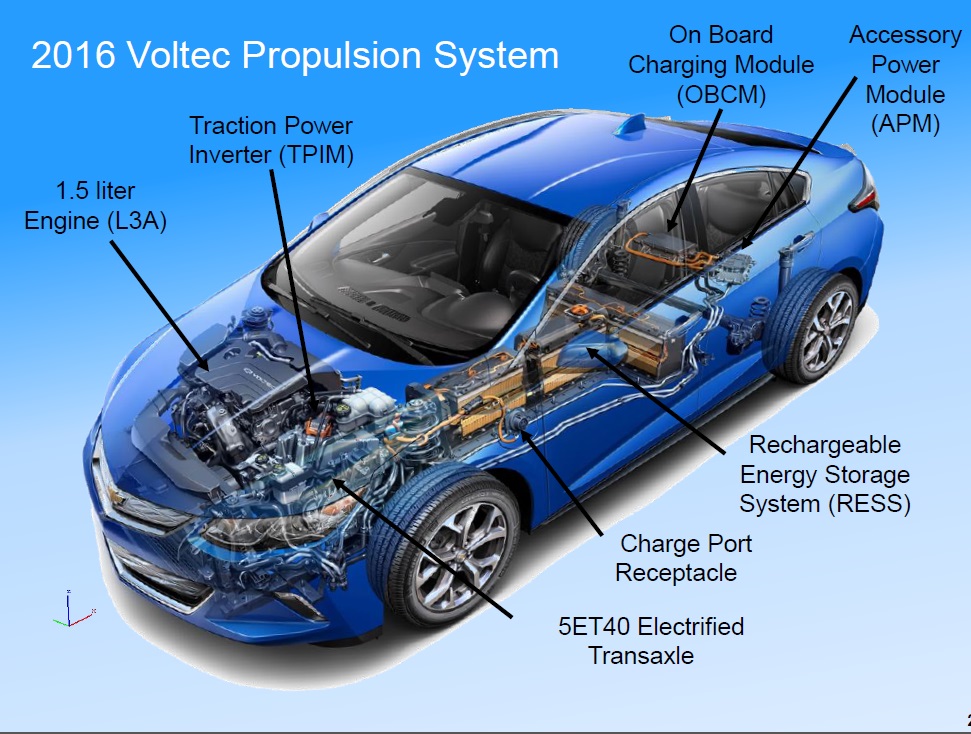In less than six months, General Motors has unveiled three separate 2016 vehicles that use its hybrid and plug-in hybrid Voltec powertrain.
The Chevrolet Volt and Malibu Hybrid, and the Cadillac CT6 Plug-In Hybrid, span three different vehicle segments.
One's a compact hatchback, one's a mid-size volume sedan, and the third is a full-size luxury sedan.
DON'T MISS: Cadillac CT6 Plug-In Hybrid: Big Battery, More Electric Range
But the powertrains for all three vehicles have been designed to use very similar hardware, with their different four-cylinder engines spanning displacements of only 1.5 to 2.0 liters.
And as we learned from detailed discussions with GM executives and a lead Voltec engineer at the New York Auto Show earlier this month, two of those powertrains are remarkably similar.
We spoke to GM product czar Mark Reuss, executive chief engineer for electric vehicles Pam Fletcher, and hybrid engineer Daryl Wilson over a total of more than two hours.

2016 Cadillac CT6, 2015 New York Auto Show
None of them would say anything substantial about the then-future plug-in hybrid version of the Cadillac CT6 sedan. The new flagship had just been unveiled at the show with a pair of gasoline engines. (The plug-in hybrid version emerged this past Monday at the Shanghai Auto Show.)
But the picture that emerged is one of intense advance planning to use the second-generation Voltec system not only in the Volt but also in the Malibu Hybrid, with only minimal changes.
And it seems safe to assume that the system in the plug-in CT6, while requiring further adaptation to a rear-wheel-drive vehicle, is fundamentally the same as well.
ALSO SEE: 47-MPG Chevrolet Malibu Hybrid: Volt's Sibling Without A Plug May Be First Of Several
The Malibu Hybrid, launched in New York, uses a Voltec drive unit that Wilson called "remarkably similar" to that of the Volt, whose technical details were first discussed last fall.
There are only two areas where it differs, he said.
The first is mechanical: The Volt powertrain has an extra clutch that doesn't appear in the Malibu Hybrid.

2016 Chevrolet Volt plug-in hybrid - details of Voltec drivetrain from SAE presentations, Feb 2015
That clutch locks out the Volt's engine when it's operating in all-electric mode and using both its electric motors to power the car at higher speeds.
That's a new fifth operating mode that wasn't present in previous Volts, but it's not needed for the Malibu Hybrid because that vehicle's maximum speed under electric-only propulsion is 55 miles per hour--against the Volt's electric top speed of 100 mph or so.
The second modification is in the materials of "Motor A," which in the Volt uses ferrite magnets for better efficiency at higher road speeds.
MORE: 2016 Chevy Volt: Bigger Battery, More Motor Power, New Range Extender Engine Details
The Malibu Hybrid replaces those, and the magnets in Motor B as well, with a slightly lower grade of neodymium magnets.
Those perform better than ferrite at the lower speeds of the hybrid drive cycle and produce less heat under repeated high loads.
Overall, the Malibu Hybrid trades off electric running at the highest speeds for slightly more electric launch capability--giving the larger Malibu mid-size sedan its own "EV launch feel."

2016 Chevrolet Volt plug-in hybrid - details of Voltec drivetrain from SAE presentations, Feb 2015
Wilson suggested that drivers may find the Malibu Hybrid operates in all-electric mode more than comparable hybrid mid-size sedans.
While he didn't name them, those would be the hybrid versions of the Ford Fusion, Hyundai Sonata, Kia Optima, Lincoln MKZ, and Toyota Camry--as well as the Toyota Prius.
But battery pack aside, the rest of the Volt's electronics are the same. The Malibu Hybrid carries over the inverter, DC-DC converter, and other elements of the 2016 Volt powertrain.
CHECK OUT: 2016 Chevrolet Volt Powertrain: How It Works In Electric, Hybrid Modes
This means the second-generation Volt no longer using nearly as many unique components that are not shared with any other GM vehicle,
And that's where the company will get its economies of scale: not only between the two Chevrolets with very similar powertrains, but also presumably also the plug-in CT6.
_________________________________________________













